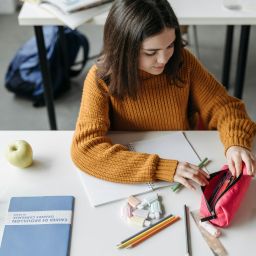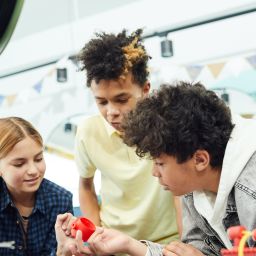
FH Summary: In this in-depth blog post by First Habits, parents learn about the ancient memory-enhancement technique called the Memory Palace and how it can significantly boost children’s learning abilities. By leveraging their children’s spatial memory and imagination, parents can help them build vivid, memorable associations that make information retention much easier. Besides improving academic performance, this engaging learning habit fosters creativity, boosts confidence and can help promote a deep-seated love for learning.
Welcome to First Habits, your trusted companion in the delightful yet often challenging journey of parenting. We’re passionate about promoting beneficial habits that build the elevated foundations of childhood development. Today, we have an exciting and somewhat magical topic to explore – the Memory Palace, a powerful tool that has the potential to significantly enhance your child’s learning abilities. This post should be read in conjunction with our summary of memory principles for children here and the foundational concepts of how memory functions.
Understanding the Memory Palace: A Historical Perspective
The Memory Palace, also known as the method of loci, has its roots in ancient civilizations. This technique was developed and practiced by Greek and Roman scholars to help them memorize lengthy speeches, complex philosophical arguments and entire books. They believed in the power of spatial memory, where recalling familiar locations could aid in remembering vast amounts of information.
Renowned science writer and U.S. Memory Champion Joshua Foer, in his book Moonwalking with Einstein, speaks about this remarkable technique. He says, “Our brains were not designed for the abstract. But they are terrific at visualizing spaces. The method of loci exploits this by using familiar spaces… to structure and store information.”
In our current era of technology and rapidly evolving educational norms, this ancient memory strategy has not lost its significance. On the contrary, its benefits are more pertinent now than ever, particularly for our digitally savvy children who are often bombarded with information from multiple channels.
The Importance of Good Habits in Memory Enhancement
At First Habits, we believe that good habits act as a powerful catalyst in a child’s development. By cultivating good learning habits, like using memory techniques such as the Memory Palace, children can improve their retention of knowledge, develop better study skills and foster a love for learning.
On the flip side, without the formation of intentional, beneficial habits, children risk falling into a downward spiral. This could mean less effective study techniques, struggles with retaining information and a decrease in enthusiasm for learning. Thus, incorporating a powerful memory technique like the Memory Palace into your child’s learning repertoire is not just about memory – it’s about setting the stage for a lifelong upward spiral in personal and academic growth.
Put yourself in your child’s shoes for a second. In early schooling, you are constantly given lists to memorize or you might need to memorize a certain passage of text to be recited in front of the class. Without a process and knowing various memory techniques, your child is rudderless and will likely be overwhelmed with this task. We at First Habits believe that memory techniques are not taught frequently enough to our children. Much of the focus is on “rote” memorization rather than showing our children how to memorize effectively using techniques that have been practiced for centuries and are still in use by top memory experts.
Building the First Memory Palace: A Practical Approach
The concept of the Memory Palace might sound complex at first, but the actual process of creating one is straightforward, and more importantly, fun for your child. The first step involves choosing a location your child is intimately familiar with. This could be your house, their school, a favorite park, or even a video game landscape they know like the back of their hand.
To help bring this concept to life, let’s dive into a short story. Let’s consider the case of Olivia, an eight-year-old who was struggling with her astronomy homework. She was finding it difficult to remember the order of the planets in our solar system. Her parents, being followers of First Habits, decided to introduce her to the Memory Palace technique.
Together with Olivia, they started transforming her home into a Memory Palace. Each room in her house became a different planet, starting with Mercury at the front door and going all the way to Neptune in her backyard. Olivia used her vivid imagination to visualize each planet. For example, she imagined Mars as a grumpy old man reclining in her father’s study, complete with a red face and a fiery temper.
Through this engaging process, Olivia created a memorable, highly visual representation of her subject. She found it significantly easier to recall the order of the planets simply by taking a mental walk through her Memory Palace. This hands-on experience not only helped Olivia with her current task, but also provided her with a technique she could apply to any future learning challenges.
Gradually Increasing Complexity: The Evolving Memory Palace
Once your child becomes comfortable with the basic concept of the Memory Palace, it’s time to expand its complexity. One way to do this is to encourage your child to add more specific details to their visualizations or by utilizing other concepts from our memorization framework like size, quantity and action. Another approach involves creating additional Memory Palaces or developing more intricate paths within an existing palace.
The complexity of a Memory Palace can grow alongside your child’s intellectual development. A kindergartener might use a Memory Palace to remember the sequence of numbers or the alphabet, while a middle schooler could use it to memorize historical dates or the periodic table. Regardless of the subject matter, the more vivid and detailed the mental images, the more effective the memory retention will be.
Parents as Memory Architects: Supporting Your Child’s Journey
As parents, your role in this journey is both pivotal and rewarding. You serve as both a guide and a cheerleader, helping your child create their Memory Palace and celebrating their achievements along the way. This process should be collaborative and enjoyable, a shared exploration into the wonderful potential of the human mind.
To make the experience truly engaging, use playful dialogue and encourage your child to be creative with their visualizations. And don’t forget to praise their efforts. Each time your child uses their Memory Palace to recall information, they are reinforcing a positive First Habit that will yield significant benefits throughout their entire lives.
The Lasting Impact: Beyond the Memory Palace
At First Habits, we believe that fostering beneficial habits is the key to the elevated foundations of childhood development. The Memory Palace technique, though focused on memory enhancement, extends far beyond this specific area. By mastering this technique, children not only boost their academic performance but also strengthen their imaginative capabilities, increase their confidence, and develop a more profound love for learning.
Incorporating the Memory Palace into your child’s learning habits is like setting them on an exciting adventure, one where learning is not just a task but a thrilling exploration. It encourages children to see beyond the surface of their subjects, to dive deeper, and to truly immerse themselves in the joy and wonder of learning.
We invite you to explore more resources on our website and sign up for our weekly newsletter to further enrich your parenting journey. At First Habits, we’re committed to sharing insights, strategies, and the latest . By joining our community, you’ll be taking a significant step towards supporting your child’s growth and lifelong learning. Let’s continue this upward spiral of learning and development, transforming our children’s futures, one First Habit at a time.












